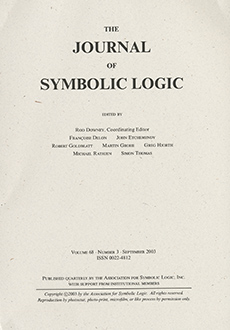Abstract
To each computable enumerable (c.e.) set A with a particular enumeration {As}s∈ ω, there is associated a settling function mA(x), where mA(x) is the last stage when a number less than or equal to x was enumerated into A. One c.e. set A is settling time dominated by another set B (B>stA) if for every computable function f, for all but finitely many x, mB(x)>f(mA(x)). This settling-time ordering, which is a natural extension to an ordering of the idea of domination, was first introduced by Nabutovsky and Weinberger in [3] and Soare [6]. They desired a sequence of sets descending in this relationship to give results in differential geometry. In this paper we examine properties of the <st ordering. We show that it is not invariant under computable isomorphism, that any countable partial ordering embeds into it, that there are maximal and minimal sets, and that two c.e. sets need not have an inf or sup in the ordering. We also examine a related ordering, the strong settling-time ordering where we require for all computable f and g, for almost all x, mB(x)>f(mA(g(x))).
Citation
Barbara F. Csima. Richard A. Shore. "The settling-time reducibility ordering." J. Symbolic Logic 72 (3) 1055 - 1071, September 2007. https://doi.org/10.2178/jsl/1191333856
Information





